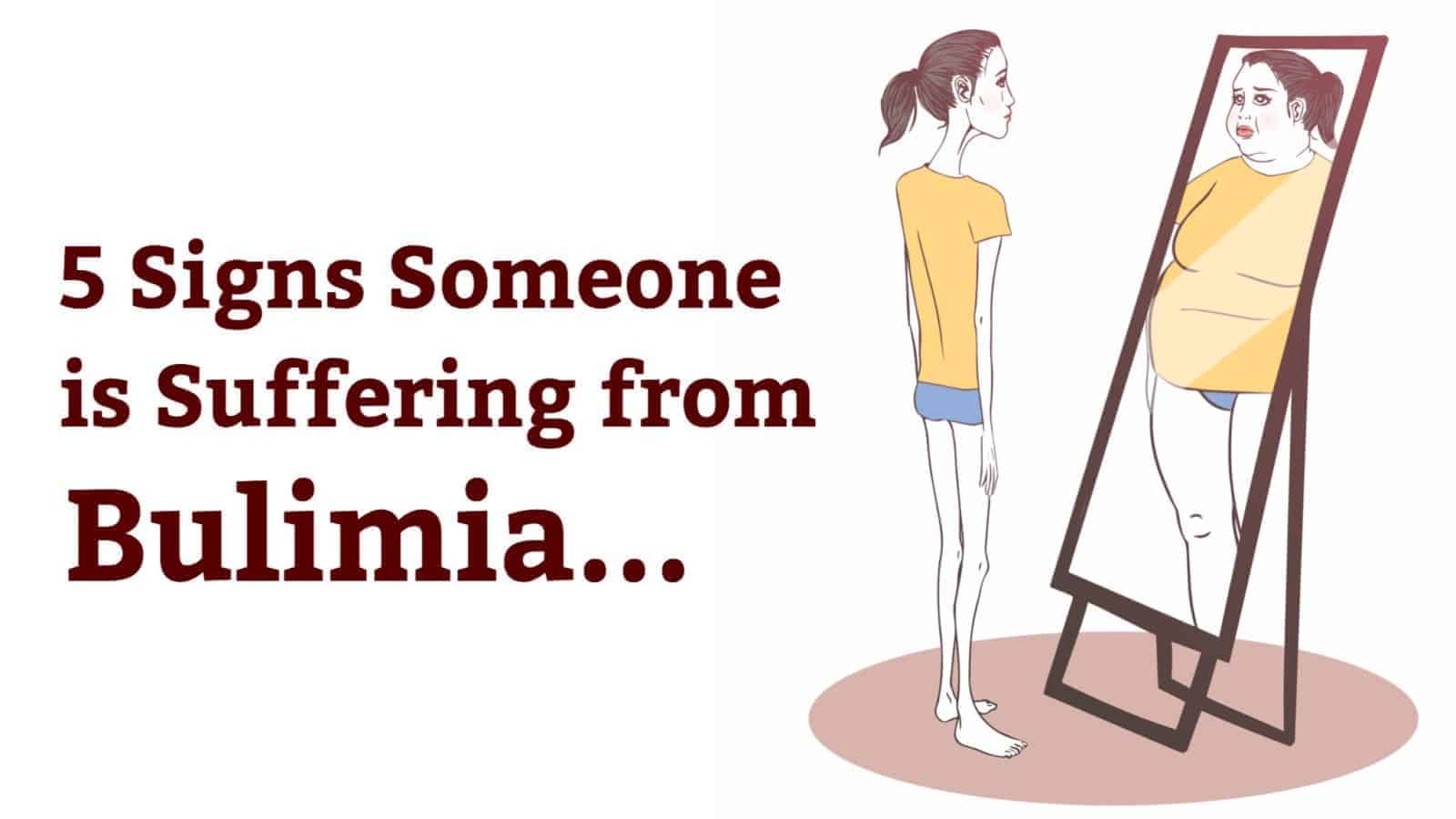Over 30 million Americans will suffer from an eating disorder in their lifetime, and bulimia nervosa is one of three diseases classified by the medical community. Oddly, 20 million of those people are females, while the other 10 million are males. The numbers indicate that females have a more difficult time accepting their body image, and they use whatever means possible to fit into society’s norms.
Bulimia nervosa is an exceedingly tricky condition to understand, and the signs of this illness are hard to spot. For starters, most people suffering from this condition look normal on the outside. They have healthy appetites, and they sit down to dinner with the rest of the family.
The real problem is what goes on behind closed doors, and it’s hard to see what people hide under baggy clothes. These people become skilled at hiding their lifestyle, and you may not know what’s going on until their weight is at a dangerous level.
A Common Bulimic Story
Allison was a vibrant high school girl who was captain of the cheerleading squad and all-around well-liked. When she started gaining weight in the 10th grade, her popularity floundered. Her new weight gain prohibited her from making the taxing moves that cheerleading required, so she quit the team.
Rattled by depression and guilt, she couldn’t stop eating. She found herself unable to control her urges around food as it was her only source of comfort. Her life was spiraling out of control. Allison talked to one of her friends about her now 50-pound weight gain and how her life was ruined.
Her friend introduced her to purging. She taught Allison that she could eat anything she wanted and purge it with little to no-calorie gain. Allison didn’t like how vomiting made her feel, so she paid little attention to her friend.
About six months later, Allison felt like her life was over. Her mother picked up a birthday cake for her little sister. In the middle of the night, she got up and ate the entire cake. She knew that eating that much sugar would make her deathly sick, so she tried purging.
The first time wasn’t easy, but she managed to do it. It was like a lightbulb clicked in her mind that she could eat all she wanted and flush it away. Fast forward six months later, Allison was painfully thin. She had lost a few teeth due to the stomach acids eating them away.
Her parents didn’t even notice that she went from 180 lbs. down to 115 in a matter of a few months. Allison knew how to hide her weight loss well, and she was hardly ever seen without baggy clothing. Her parents often praised her weight loss and told her how good she was doing, but little did they know their little girl was in serious trouble.
Bulimia nervosa soon took hold of Allison and her life. When she would eat anything, she couldn’t keep it down. Her skin developed lesions, her breath always smelled horrible, and her hair felt like straw. Her mother saw her undressing to get into the bathtub one day and was horrified by what she saw.
Allison’s parents immediately rushed her to the hospital, where she was admitted for an eating disorder. It’s been three years since she went to therapy, and she is doing much better. If her parents had not intervened when they did, it could be a vastly different story.
Statistics on Eating Disorders
Bulimia nervosa is not a respecter of persons. It’s a disease that doesn’t care how much money you have, your status in life, or the area of the country where you reside.
Many famous stars have battled bulimia, such as Jane Fonda, Brittney Spears, Richa Chadha, Kesha, Demi Lovato, Lindsay Lohan, Paula Abdul, Lady Gaga and Princess Diana. Two out of every 100 people will suffer from one of the three eating disorders. However, out of those two people, one will suffer from both bulimia and anorexia.
Anorexia and bulimia nervosa are often confused, but they are vastly different disorders. Those who suffer from anorexia don’t purge their food; instead, they don’t eat enough to keep up with their body function. They exercise fanatically, eat little if anything, and often take massive amounts of weight loss medications.
With both conditions, these people look in the mirror and see someone who is fat. It doesn’t matter how frail and little they’re; they will always see an overweight individual staring back at them. Those suffering from this condition have a distorted view of their body.
It’s estimated that right now, more than 8 million people have an eating disorder. Sadly, only one in ten people will get the treatment they need. The standard range to develop an eating disorder is between 12-25 years of age.
Eating disorders are considered a mental illness because the mind’s warped perceptions cause them to starve themselves to death. Of all the mental illnesses out there, eating disorders have the highest mortality rates. Even if a person does get help, sometimes the damage done to the body is irreversible, and 20 percent will die due to complications.
Signs of Bulimia
The key to combating bulimia is to get early treatment, which means that friends and family members need to be on guard and know what to look for in their loved ones.
1. They Go to The Bathroom After Eating
One of the most significant signs of fighting with an eating disorder is that they go to the bathroom after eating. If you notice that your loved one eats enormous amounts of food and goes to the bathroom, it could be a sign of trouble. Be careful to see how much time they spend in the bathroom, too, as purging can take time.
2. Vomit Around the Toilet Bowel
While it’s gross to think about, vomit has a specific smell, and it can get everywhere. If someone is continuously purging, they will leave behind some trace of evidence. Look around the underside of the toilet seat and see if there are any remnants left behind.
3. Tooth Decay
Is your friend or loved one complaining about their teeth lately? The stomach acids rise to the surface when purging, and it can leave behind devastation. The teeth become rotted, but the gums and tissues inside the mouth can be raw. The stomach acid will eat the mouth to pieces.
4. Red Eyes
Purging takes a lot of strength and muscles. When someone is continuously doing this activity, they are going to bust a few blood vessels in the eyes. Be on the lookout for bloodshot eyes that don’t seem to get better. It can be a sign that your loved one is purging.
5. Weight Fluctuations
Weight fluctuations are the biggest indicator of a problem with eating disorders. However, another sign that something is amiss is if a person wants to wear large, baggy clothes in the heat of summer. Jackets and hoodies are commonplace when someone is trying to hide problems in their body.
One area that usually tells the truth about weight loss is the face and hands. The collarbone is another area that always shows when the weight is at a dangerous level.
6. Food Disappears in Large Quantities
As in the story of Allison above, she found out that she couldn’t control her urge to binge. She ate an entire birthday cake, but this behavior is quite common among those who suffer from bulimia nervosa. If you notice large amounts of food missing or you see piles of wrappers from snack cakes and other foods hidden, then it could be a sign that there’s a problem.
7. Mood Issues
When a person has an eating disorder, they are not getting the proper nutrients their body needs to thrive. Your brain needs vitamins and minerals to function. Since the bulimic purges most if not all of their food, their nutrients are low. A lack of nutrition can mess with brain function, which can cause mood disturbances.
You may notice them being sad, crying a lot, isolating themselves, and having low self-esteem. Any shift in moods should be investigated for the underlying cause.
 Final Thoughts on Bulimia Nervosa: Knowing When to Get Help
Final Thoughts on Bulimia Nervosa: Knowing When to Get Help
Many parents and relatives try to handle matters on their own. Sadly, bulimia nervosa is a big issue, and it should be managed by a professional. The person suffering from an eating disorder needs counseling and trained about the proper way to eat.
Their unhealthy relationship with food is what probably brought them to this point anyway; then you add a mental illness on top of it, and it’s a recipe for disaster. Unlike some other psychological disturbances, having an eating disorder puts a person at an increased risk of dying prematurely.
The lack of proper nutrition, as well as the damage caused by binging and purging, can be too much for the heart to handle. It’s better to err on the side of caution than to wait too late to get help.




















